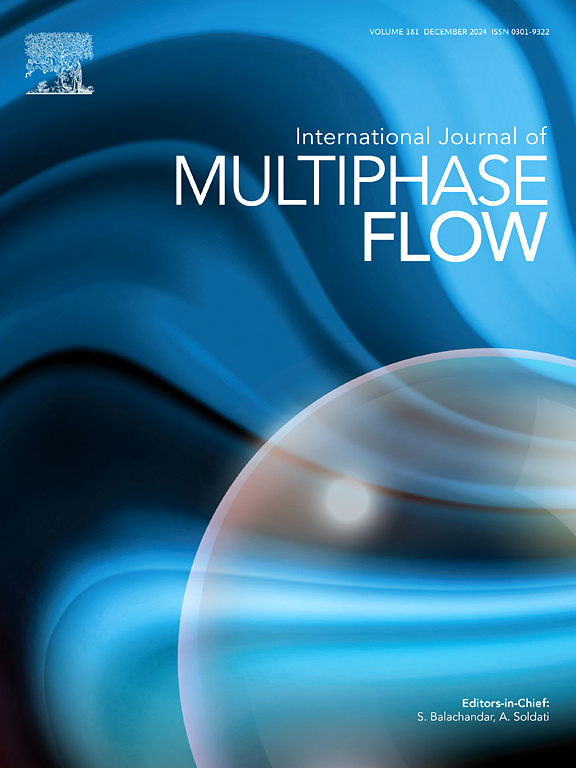High-efficiency microreactor design for hydrogen peroxide decomposition: impact of concentration and flow rate on two-phase flow instability and conversion
IF 3.6
2区 工程技术
Q1 MECHANICS
International Journal of Multiphase Flow
Pub Date : 2025-03-25
DOI:10.1016/j.ijmultiphaseflow.2025.105229
引用次数: 0
Abstract
Microreactors have been widely applied in various fields involving gas-liquid two-phase reactions. However, there is still a need to achieve stable and high conversion rates in microreactors because the complex interactions between the gas and liquid phases can lead to unstable flow patterns, resulting in inefficient mass transport and reduced conversion rates. This work designs a novel radial channel microreactor for hydrogen peroxide decomposition. By integrating fast Fourier transform (FFT) and wavelet transform (WT) methods for time-frequency analysis with visual experiments, this study reveals the impact of reactant flow rate and concentration on flow instability, as well as flow pattern transitions. The radial channel reactor attains a conversion level that remains unaffected by variations in reactant flow rate by employing periodic flow pattern transitions when using 3 wt.% H₂O₂. In the case with 10 wt.% and the case with 30 wt.% H2O2, the radial channel reactor can stabilize the flow pattern transition to achieve a high conversion. The highest conversion rate for H2O2 decomposition is 92.7 % in the case with 30 wt.% H2O2, surpassing the previously reported values in the literature. Through multiple linear regression (MLR) method, a predictive model is proposed and helps to elucidate the effects of reactant flow rate and concentration. This work proves an improved reactor design to utilize and alleviate two-phase flow instability can enhance reactor performance and achieve high conversion rates.

双氧水分解高效微反应器设计:浓度和流速对两相流不稳定性和转化率的影响
微反应器已广泛应用于涉及气液两相反应的各个领域。然而,由于气相和液相之间复杂的相互作用可能导致不稳定的流动模式,导致质量传递效率低下和转化率降低,因此仍然需要在微反应器中实现稳定和高的转化率。本文设计了一种新型的径向通道分解过氧化氢微反应器。通过将快速傅里叶变换(FFT)和小波变换(WT)方法结合视觉实验进行时频分析,揭示了反应物流速和浓度对流动不稳定性以及流型转换的影响。当使用3 wt.% H₂O₂时,通过采用周期性流型转换,径向通道反应器达到不受反应物流速变化影响的转换水平。在H2O2添加量为10 wt.%和30 wt.%的情况下,径向通道反应器可以稳定流型转换,实现高转化率。在H2O2浓度为30wt .%的情况下,H2O2分解的最高转化率为92.7%,超过了文献中先前报道的值。通过多元线性回归(MLR)方法,提出了一个预测模型,并有助于解释反应物流速和浓度的影响。通过对反应器设计的改进,充分利用和缓解两相流的不稳定性,可以提高反应器的性能,实现高转化率。
本文章由计算机程序翻译,如有差异,请以英文原文为准。
求助全文
约1分钟内获得全文
求助全文
来源期刊
CiteScore
7.30
自引率
10.50%
发文量
244
审稿时长
4 months
期刊介绍:
The International Journal of Multiphase Flow publishes analytical, numerical and experimental articles of lasting interest. The scope of the journal includes all aspects of mass, momentum and energy exchange phenomena among different phases such as occur in disperse flows, gas–liquid and liquid–liquid flows, flows in porous media, boiling, granular flows and others.
The journal publishes full papers, brief communications and conference announcements.

 求助内容:
求助内容: 应助结果提醒方式:
应助结果提醒方式:


